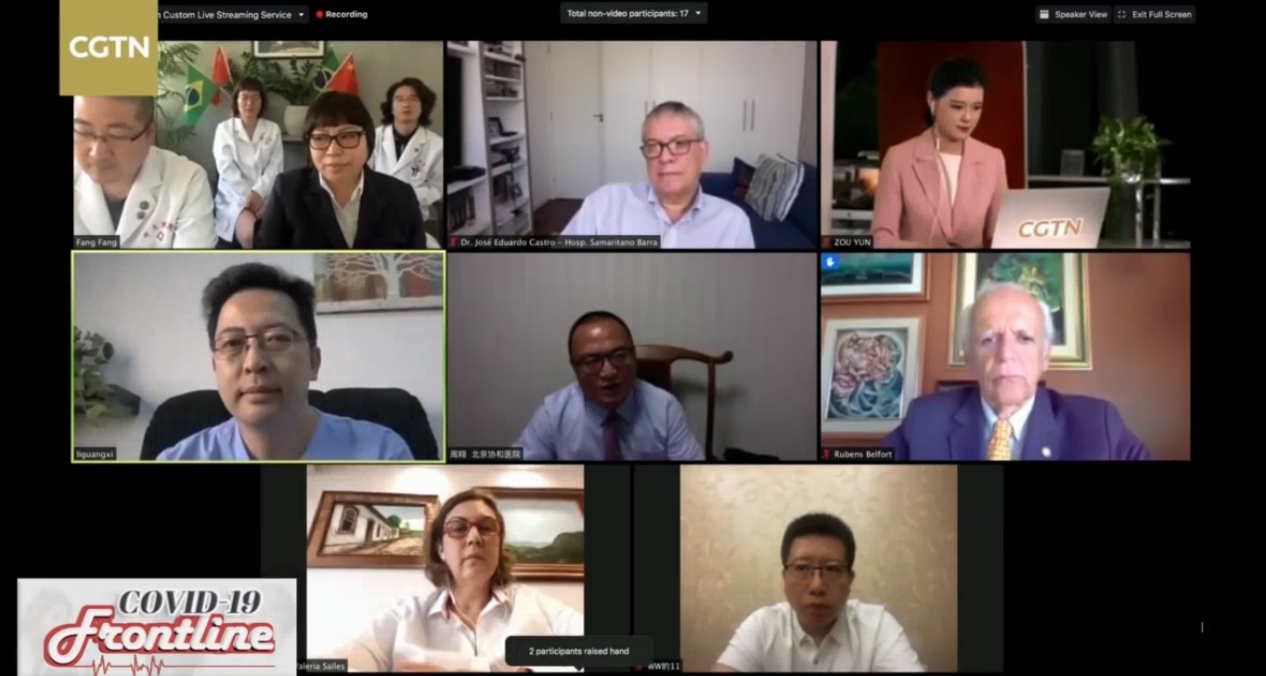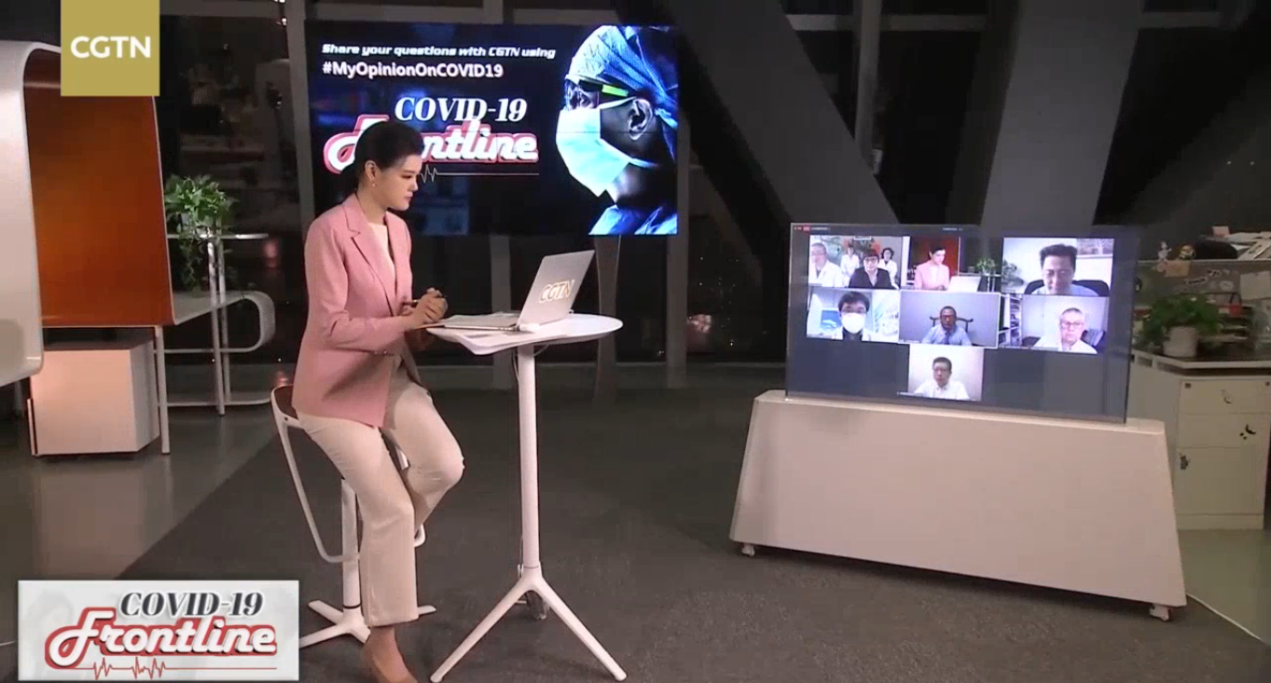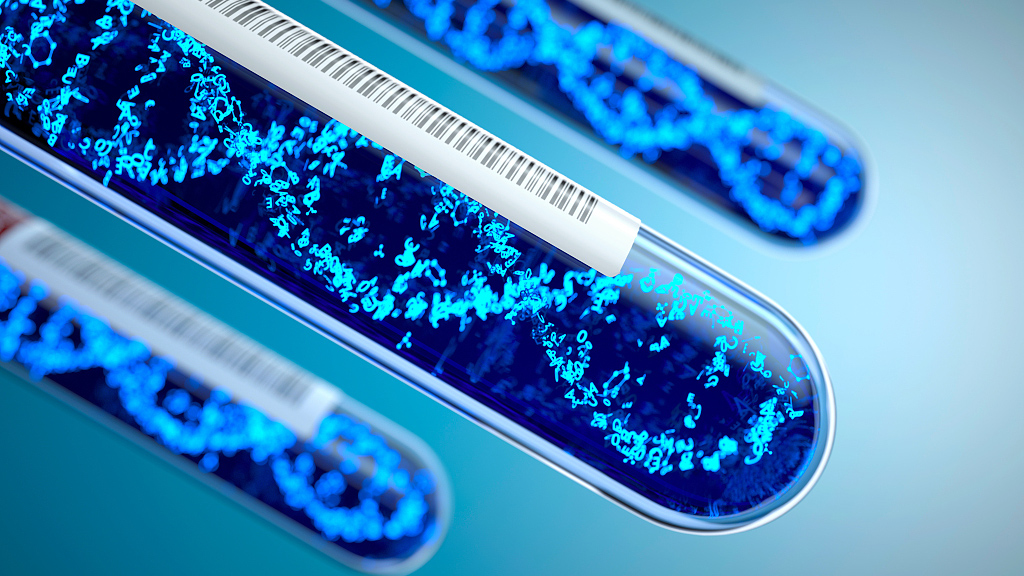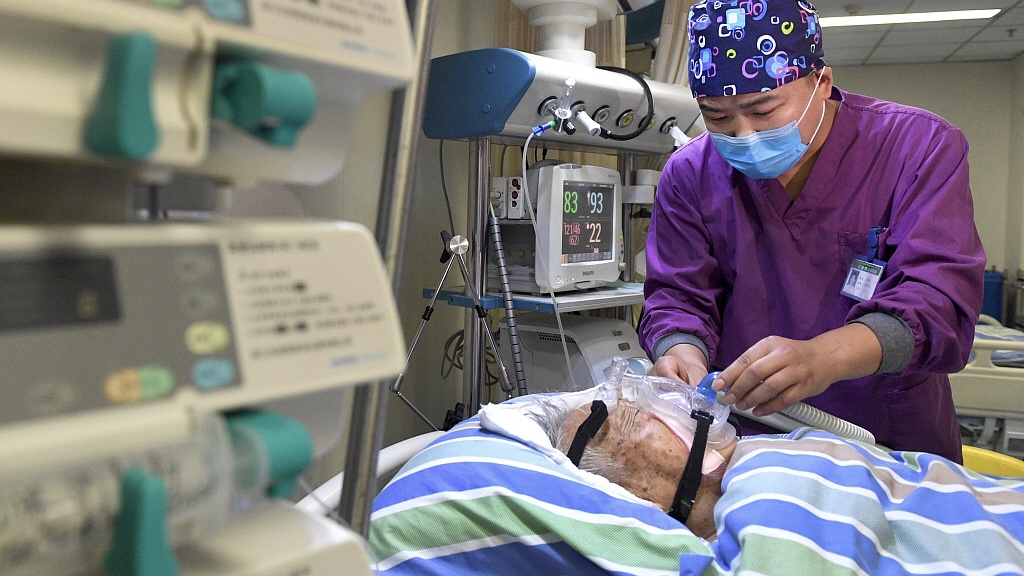Editor's note: On March 12, 2020, the World Health Organization (WHO) declared COVID-19 a pandemic, and as of Wednesday, June 24, about 200 countries and regions have confirmed over 8,993,000 cases, according to the WHO. On CGTN's live program "COVID-19 Frontline," we invited workers and experts from China and other parts of the world to share their experiences and take questions from social media in the hope of providing more information for those who are battling against the pandemic.
In the latest episodes of CGTN's "COVID-19 Frontline" on Tuesday, June 23, CGTN invited critical care medicine and pulmonary treatment experts from Peking Union Medical College Hospital and Guang'anmen Hospital of China Academy of Chinese Medical Sciences to exchange their experience with their Brazilian counterparts.
Live: Chinese medics share COVID-19 treatment experience with Brazilian counterparts
Brazil has the second-highest number of confirmed COVID-19 cases in the world behind the United States. To date, there are 1,145,906 COVID-19 cases with 52,645 deaths in Brazil, according to the COVID-19 dashboard by the Center for Systems Science and Engineering at Johns Hopkins University.

"COVID-19 Frontline" held on Tuesday, June 23. /CGTN
"COVID-19 Frontline" held on Tuesday, June 23. /CGTN
Coronavirus pandemic in Brazil
Rubens Belfort, president of the National Academy of Medicine of Brazil, said the first confirmed COVID-19 case in Brazil was reported in February and the first death occurred in March. At that time, many countries had reported the outbreak, and medical materials were in short supply in the international market. So, Brazilian companies began to produce the required materials themselves. The theory that the virus is less contagious in the tropics has been completely disproved in Brazil. The worst COVID-19 hit places in the country are the areas with high temperatures, such as the Amazon area and northeast Brazil.
Now the prevention and control measures that Brazil is taking are similar to those in other countries, like social distancing, wearing masks, washing hands, etc. A lot of tests are also being done in Brazil. The British vaccine is being tested in Brazil, so too is the Chinese vaccine, which is being tested in Sao Paulo, Brazil.
Jose Eduardo Couto de Castro, director of Hospital Samaritano, said in his hospital, of the 3,303 people tested between March 15 and June 15, 1699, people tested COVID-19 positive. He said 338 people were hospitalized in intensive care, and 228 patients were mechanically ventilated. The overall hospital mortality rate reached 12.9 percent. But for the patients in ICU, the mortality rate is 34 percent. For the patients who need assisted ventilation, the mortality rate is as high as 50 percent. "From these figures, you can also see how devastating this unknown disease is. And for us, how difficult it is to treat patients," he said.

CGTN's livestream program "COVID-19 Frontline" held on Tuesday. /CGTN
CGTN's livestream program "COVID-19 Frontline" held on Tuesday. /CGTN
Do asymptomatic coronavirus carriers need to be treated?
Zhou Qiang, director of China-Brazil International Cooperation Base of Chinese Medicine Products, said regarding COVID-19 patients who don't show any symptoms, some doctors said they don't need to be treated with medicine; they just need to stay at home. While others suggest that they take medicine, which may have side effects. So, he wanted to know how to treat asymptomatic patients.
Li Guangxi, director of Respiratory Department of Guang'anmen Hospital of China Academy of Chinese Medical Sciences, answered that there is no need to give drugs to patients who don't have symptoms. Instead he recommended that patients do more exercise and take care of their mental health. Whether it's traditional Chinese medicine or Western medicine, it's not recommended that they be used long term.
Zhou Xiang, deputy director of Critical Care Medicine at Peking Union Medical College Hospital, added that the virus testing method is very important for cured patients with positive test results to confirm whether they are still infectious. He said PCR can't tell whether the virus is alive or not, whole genome sequencing and viral culture are also needed for these patients.
03:02

About mechanical ventilation
Brazilian doctors mentioned that the mortality rate of COVID-19 patients requiring mechanical ventilation is about 50 percent, which is significantly lower than that of Wuhan in China and New York in the United States. Zhou Xiang asked the Brazilian doctors to share their strategy of mechanical ventilation.
Jose Eduardo Couto de Castro said the progress made in Brazil is achieved on the basis of international experience. By drawing on the experience of other countries and combining with the treatment practice, it's recommended not to do intubation nor mechanical ventilation at an early stage. Brazilian doctors mainly adopt the high-flow oxygen therapy.
Dr Zhou Xiang also shared the treatment of two Chinese patients, both of whom received intubation. He said that invasive mechanical ventilation should be carried out as soon as possible when non-invasive oxygen therapy is ineffective or the patient's condition has not improved significantly. During the webinar, he also shared the experience of Chinese doctors in the treatment of lung recruitment and prone position.
03:08

In later episodes of "COVID-19 Frontline," more frontline doctors and experts from Wuhan will join in to share their experience with their colleagues from other parts of the world. If you have any questions regarding COVID-19, you can share with us using #MyOpinionOnCOVID19 on Facebook.
Videos by Zeng Hongen
Cover image by Du Chenxin